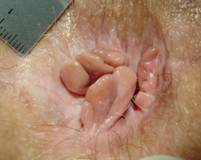Introduction
Anal tags, also known as hemorrhoidal skin tags or piles, can be a source of discomfort and inconvenience for many individuals. These fleshy flaps of skin around the anus often accompany hemorrhoids or result from various anal conditions. If you’re dealing with anal tags and seeking relief, you’re in the right place. In this blog, we’ll delve into the world of anal tags, explore why they form, and discuss the various removal options available to you.
 Understanding Anal Tags
Understanding Anal Tags
Anal tags are essentially benign growths of skin and tissue that develop in the anal area. They are often shaped like small lumps or flaps and can vary in size. Anal tags usually form due to:
Symptoms and Discomfort
While anal tags themselves are generally harmless, they can cause discomfort and inconvenience for some individuals. Common symptoms associated with anal tags include:
Removal Options for Anal Tags
If anal tags are causing you discomfort or affecting your quality of life, there are several removal options to consider:
Conclusion
Anal tags can be a source of discomfort and annoyance, but there are effective removal options available to alleviate your symptoms and improve your quality of life. If you’re experiencing discomfort due to anal tags, consult with a healthcare provider who can help you choose the most appropriate treatment option for your specific situation. With the right approach, you can bid farewell to anal tags and enjoy greater comfort and peace of mind.
Note: One Stop Medical Center provides the service of hemorrhoid care. We have two office locations in Edina, Minnesota, and Casselberry, Florida. If you are interested in hemorrhoid care, Please fill out the online registration first, we will call you in 2 business days, or please call us at 1-888-992-0019 if any questions.
 Have you been using too much toilet paper because of pesky anal tags? Hemorrhoidal skin tags (piles) are flaps of skin or flesh found around the anus. They often form as a result of an existing hemorrhoids.
Have you been using too much toilet paper because of pesky anal tags? Hemorrhoidal skin tags (piles) are flaps of skin or flesh found around the anus. They often form as a result of an existing hemorrhoids.  Although the exact causes of skin tags are unclear, they usually result from one or more of the following:
Although the exact causes of skin tags are unclear, they usually result from one or more of the following:



